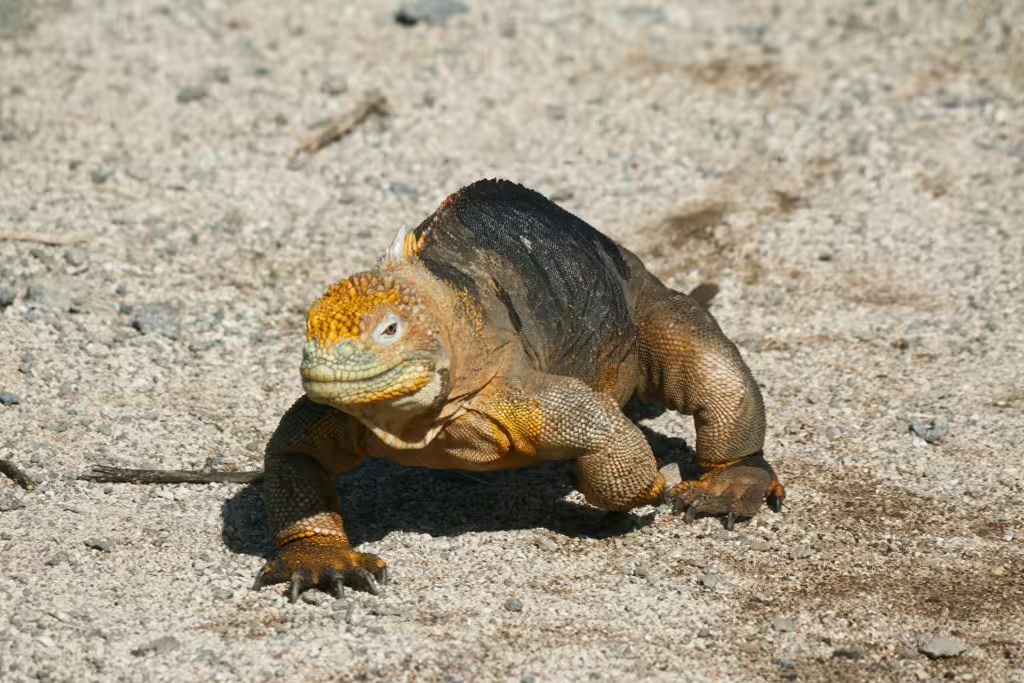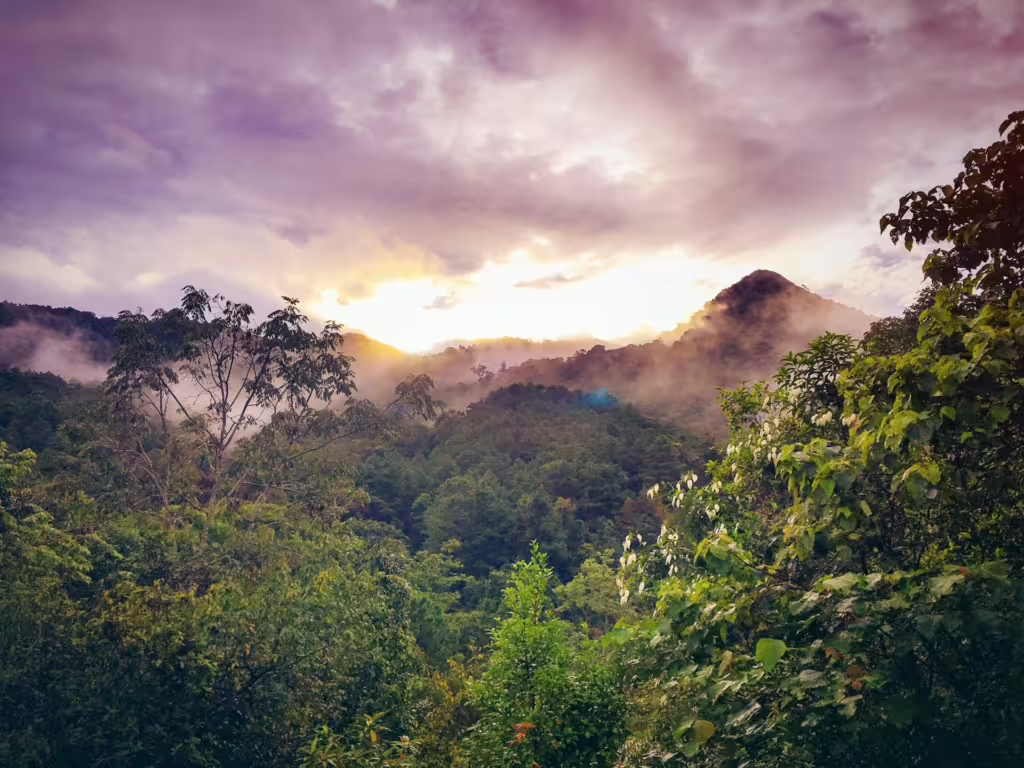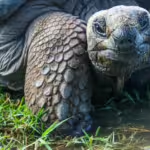Here on True Investigator, we have explored a host of diverse ecosystems all over the world. We have shown you the incredible breadth of life that dwells in the underwater depths of our planet’s marine ecosystems. We’ve been high in the Cloud Forests and deep in the Amazon River Basin. We’ve traversed the vast expanse of the sun-drenched African savanna and trudged across the frigid tundra of the Arctic Circle. And in each and every one of these places, no matter the environmental conditions or issues caused by climate change, life finds a way to endure.
Most of us go through our lives never encountering any of these wild places. We see them in nature shows and children’s books, but they are no more real to us than Narnia or Westeros. As a result, too many of us take the natural world for granted. We don’t mean to view things this way; few humans are that callous, thankfully. We just have a thousand and one other things to occupy our time and our mind. But even if we don’t consciously recognize them day to day, the diverse ecosystems of this planet continue on, surviving and thriving despite our collective mistakes and willful ignorance as a species.
Regardless of our recognition, the Earth remains a patchwork of diverse ecosystems, each of them unique and vibrant in their own right. In certain, incredible areas of this world, these ecosystems collide, blending land, sea, and sky into rich, vibrant habitats for an astonishing array of species. These regions are known as biodiversity hotspots and they are vital for maintaining the balance of the planet’s biodiversity.
In this article, we will explore these hotspots, traveling along the coast where the land meets the ocean or walking the edges of the woods where the forest meet the savanna. Besides those examples, we will explore several other biodiversity hotspots around the world where land, sea, and sky come together as one.

The Amazon Rainforest and the Amazon River Basin, South America
One of the most famous biodiversity hotspots and indeed, the most important ecosystems on the planet, is the Amazon Rainforest. This sprawling expanse of greenery merges land, river, and sky into one, cohesive ecosystem that is absolutely teeming with life. The Amazon stretches over 6.7 million square miles, spanning across nine countries, including Brazil, Peru, and Colombia. Current estimations indicate that this vast forest is home to more than 390 billion trees, though that number is reduced daily thanks to rampant deforestation. Regardless of it’s ever-shrinking state, the Amazon is home to a full 10% of the world’s known species; a staggering figure, even for so large and diverse an ecosystem.
The Amazon Rainforest is often referred to as “lungs of the Earth” because it produces 20% of the world’s oxygen. This is among the more crucial services the forest provides on behalf of humanity, in addition to providing humanity with lumber, medicine, and food for local and indigenous peoples. In terms of ecosystem abutment, the forest’s interaction with the Amazon River and its tributaries creates an interconnected web of habitats. Freshwater fish species, such as the piranha and the electric eel, thrive in the river’s waters, while jaguars, capybaras, and anteaters roam the forest floor. In the sky and the canopy above the forest floor, the Amazon is home to countless bird species like the toucan and harpy eagle. It’s endless array of plant species—specifically its towering trees—provide shelter and food for a variety of creatures.
The convergence of the many diverse ecosystems in this region is a testament to the intricate relationship between water, land, and air that exists in nature. Still, despite the area’s innate vastness, it faces increasing threats from deforestation, mining, and the ongoing effects of climate change, which threaten to disrupt its delicate and wholly necessary ecological balance.
The Great Barrier Reef and Queensland’s Wet Tropics, Australia
Located off the northeastern coast of Australia, the Great Barrier Reef is considered to be one of the UNESCO’s World Heritage sites. This means that it is considered to be one of the most vital ecosystems on the planet. At the same time, and perhaps for the same reasons, it is also one of the world’s most iconic marine ecosystems. Spanning over 1,429 miles, this sprawling coral reef is home to more than 1,500 species of fish, 411 types of hard coral, and a wealth of other marine life, including turtles, dolphins, and sharks. Above it and closer to shore, birds and other species also make use of the reef’s abundance of resources; one of those species being mankind. Additionally, the reef’s shallow waters are rich with marine plant life, and its coral structures provide crucial habitats for countless marine species.
What many people don’t know is that the Great Barrier Reef is situated near the Wet Tropics of Queensland, an ancient rainforest that adds a terrestrial dimension to the region’s already impressive biodiversity. The Wet Tropics themselves are hotspots of incredible diversity, with over 3,000 species of plants and more than 400 species of birds living amongst the towering trees. This rainforest, though not as popular as the Amazon, is one of the oldest surviving rainforest ecosystems on the planet. The groves of verdant trees, swaths of colorful flowering plants, and lush, all-encompassing greenery of the Wet Tropics provides a stark contrast to the coral-filled waters of the semi-adjoining reef.
Some readers might be wondering how the reef and he forest intersect, but the boundary between the two is rather easy to delineate. Indeed, the physical boundary between the Great Barrier Reef and Queensland’s Wet Tropics creates a seamless meeting where the land, sea, and sky come together in perfect harmony. Sea turtles and seabirds use the rainforests as nesting sites, while land-based creatures such as the fearsome cassowary and other terrestrial creatures, rely on both the land and nearby coastal areas for food. This hotspot, like nearly all the others on this list, faces pressures from human activity, mostly in the form of climate change, coral bleaching, ocean acidification, and habitat destruction, making conservation efforts for this heritage site more crucial than ever before.
The Galápagos Islands, Ecuador

The Galápagos Islands were first made famous by naturalist Charles Darwin, who used them as a main study site for his now widely-accepted Theory of Evolution. The reason they were such a valuable piece of that theory crafting is because of the vast array of lifeforms that call the semi-isolated island chain home. Located off the coast of Ecuador, the Galápagos are both a living laboratory for the study of evolution and one of the world’s most important biodiversity hotspots. Born of volcanic eruptions long ago, these islands are home to a wide variety of ecosystems, from arid deserts to lush, humid highlands. At the same time, their shores meet the Pacific Ocean, an environment that is already teeming with marine life. The result is a fascinatingly rich blending of marine and terrestrial flora and fauna.
On the islands’ rugged shores, sea lions bask in the sun, while Galápagos penguins, the only penguin species to live even remotely near the equator, dive into the cold, nutrient-rich waters to catch fish. The Galápagos is an archipelago and the diverse birdlife that calls it home includes the famous Darwin’s finches, which played a key role in the development of much of Charles Darwin’s theories. At the same time, the flightless cormorant, a bird that has adapted to its island environment by losing the ability to fly, sticks out amongst the other marine avians of the island, such as the infamous Blue-Footed Booby.
One of the most remarkable species that calls the Galápagos home, is the marine iguana, the only lizard on the planet that can swim in the ocean. They take these undersea dives in order to forage along the shores for algae, resisting the buffeting currents and using their strong claws to cling to underwater rocks as they tear off the algae. If anything, it is the marine iguana itself that provides the best example in the whole archipelago of the intersection of land and sea life.
A wide range of plant species also lives and thrives in the Galápagos, including the giant prickly pear cactus, which plays a vital role in supporting a number of local wildlife species; including several of Darwin’s famous finches. Because the islands are isolated, the animals and plants that live here have evolved to fill very specific ecological niches. This is why evolution is so key to our very understanding of the island chain. To this day, the Galápagos remains one of the most unique examples of nature’s adaptability, even as climate change, invasive species, and human activity threaten it on every one of its many shores. There is a delicate balance that exists in this extraordinary hotspot, but it can easily be upended by the continued proliferation of our own ecological damage.
The Cape Floral Region, South Africa
Situated at the southern tip of Africa, the Cape Floral Region is one of the world’s richest biodiversity hotspots. Nearly 9,000 plant species grow in the region and nearly 70% of those are unique, meaning they are found nowhere else on Earth. The region is also home to the famous fynbos biome, a type of shrubland that thrives in the unique Mediterranean climate of the area. These dense, colorful shrublands are characterized by a wide variety of endemic plant species, including the protea, which is South Africa’s national flower, as well as many species of strikingly beautiful orchids.
The land-based flora of the Cape Floral Region is only complemented by the nearby marine ecosystems of the Southern Ocean. As this is a coastal region, it’s no surprise that the two areas are in such close proximity, but it does mean that the seals, dolphins, and the endangered white shark that call the area home still rely on the region to survive. This seamless collision of terrestrial and marine ecosystems creates a dynamic environment where species from both realms interact. Birds like the African penguin and the Cape gannet nest along the nearby cliffs, while the region’s lush plant life provides essential food and shelter for various insects, amphibians, and many small, sometimes unseen mammals.
Sadly, the region has been made vulnerable thanks to threats like invasive species, land development, and as always, climate change. Current conservation efforts to protect this area are focused on preserving the region’s unique flora and maintaining the delicate balance between land and sea.
The Coastal Temperate Rainforests of the Pacific Northwest, USA and Canada
Stretching along the coastlines of the United States and Canada, the temperate rainforests of the Pacific Northwest tower above the nearby Pacific Ocean. In this region, the two ecosystems converge and share resources, bolstering plant and animal life across terrestrial and marine areas. One of the most diverse ecosystems in North America, these rainforests are characterized by towering trees such as the Sitka spruce, western red cedar, and Douglas fir, which can live for centuries, supporting a wide variety of plant and animal life on their trunks and branches.
Along the coast, the marine environment meets the forest in dramatic fashion, with rocky shorelines and kelp forests thriving in the nutrient-rich waters. The temperate forest is home to a diverse array of animals, including black bears, elk, wolves, and the elusive Canada lynx. In the sky above, bald eagles soar over the forest canopy, while owls, songbirds, and hummingbirds call the area home. Many of those birds and animals prey on the fish that live in the waters below, or those that swim inward up the rivers to spawn. As diverse as this ecosystem is, these massive forests and stormy seas still face significant threats from logging, habitat destruction, and climate change thanks to human beings.
True Investigator Says…
As you can see, the many biodiversity hotspots in this planet are not only important for what they provide in terms of living space for local flora and fauna, there are places that represent a convergence of life in its many forms. In these hotspots, land, sea, and sky converge, representing the delicate interplay of terrestrial, marine, and aerial ecosystems. Each of these different ecosystems provides critical resources for the others; living off one another and feeding into each other in ways that many of us don’t plainly comprehend. So, whether we’re talking about the tropical rainforests of the Amazon, the coral reefs of Australia, or the rainforests of the Pacific Northwest, we are discussing places that are critical to the health of our planet.
We may still see them as distant spaces, fantasy lands that come from books and movies, but they are a real and vital as anything right in front of our own faces. Thus, as we move forward into the future, it is crucial that we do whatever we can to prioritize conservation efforts to protect these places. Without them, all life would begin to cascade into oblivion, ourselves included.
Discover more from TrueInvestigator
Subscribe to get the latest posts sent to your email.


